Related Research Articles

Fahrenheit 451 is a 1953 dystopian novel by American writer Ray Bradbury. It presents a future American society where books have been outlawed and "firemen" burn any that are found. The novel follows in the viewpoint of Guy Montag, a fireman who soon becomes disillusioned with his role of censoring literature and destroying knowledge, eventually quitting his job and committing himself to the preservation of literary and cultural writings.

Frederick Douglass was an American social reformer, abolitionist, orator, writer, and statesman. He became the most important leader of the movement for African-American civil rights in the 19th century.

Mars, the fourth planet from the Sun, has appeared as a setting in works of fiction since at least the mid-1600s. Trends in the planet's portrayal have largely been influenced by advances in planetary science. It became the most popular celestial object in fiction in the late 1800s, when it became clear that there was no life on the Moon. The predominant genre depicting Mars at the time was utopian fiction. Around the same time, the mistaken belief that there are canals on Mars emerged and made its way into fiction, popularized by Percival Lowell's speculations of an ancient civilization having constructed them. The War of the Worlds, H. G. Wells's novel about an alien invasion of Earth by sinister Martians, was published in 1897 and went on to have a major influence on the science fiction genre.

Ray Douglas Bradbury was an American author and screenwriter. One of the most celebrated 20th-century American writers, he worked in a variety of genres, including fantasy, science fiction, horror, mystery, and realistic fiction.
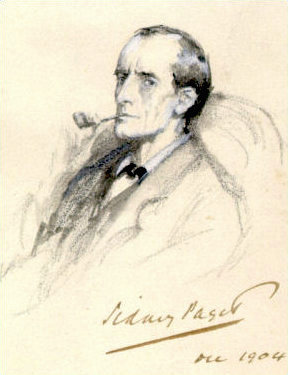
Sherlock Holmes is a fictional detective created by British author Arthur Conan Doyle. Referring to himself as a "consulting detective" in the stories, Holmes is known for his proficiency with observation, deduction, forensic science and logical reasoning that borders on the fantastic, which he employs when investigating cases for a wide variety of clients, including Scotland Yard.

The Martian Chronicles is a science fiction fix-up novel, published in 1950, by American writer Ray Bradbury that chronicles the exploration and settlement of Mars, the home of indigenous Martians, by Americans leaving a troubled Earth that is eventually devastated by nuclear war.

It's a Wonderful Life is a 1946 American Christmas supernatural drama film produced and directed by Frank Capra. It is based on the short story and booklet "The Greatest Gift" self-published by Philip Van Doren Stern in 1943, which itself is loosely based on the 1843 Charles Dickens novella A Christmas Carol. The film stars James Stewart as George Bailey, a man who has given up his personal dreams in order to help others in his community and whose thoughts of suicide on Christmas Eve bring about the intervention of his guardian angel, Clarence Odbody. Clarence shows George all the lives he touched and what the world would be like if he had not existed.
"The Monkey's Paw" is a horror short story by English author W. W. Jacobs. It first appeared in Harper's Monthly in 1902, and was reprinted in his third collection of short stories, The Lady of the Barge later that year. In the story, three wishes are granted to the owner of The Monkey's Paw, but the wishes come with an enormous price for interfering with fate.

X Minus One is an American half-hour science fiction radio drama series that was broadcast from April 24, 1955, to January 9, 1958, in various timeslots on NBC. Known for high production values in adapting stories from the leading American authors of the era, X Minus One has been described as one of the finest offerings of American radio drama and one of the best science fiction series in any medium.

Dandelion Wine is a 1957 novel by Ray Bradbury set in the summer of 1928 in the fictional town of Green Town, Illinois, based upon Bradbury's childhood home of Waukegan, Illinois, and serving as the first novel in his Green Town Trilogy. The novel developed from the short story "Dandelion Wine", which appeared in the June 1953 issue of Gourmet magazine.

R Is for Rocket (1962) is a short story collection by American writer Ray Bradbury, compiled for Young Adult library sections. It contains fifteen stories from earlier Bradbury collections, and two previously uncollected stories.
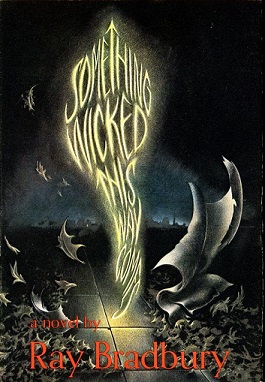
Something Wicked This Way Comes is a 1962 dark fantasy novel by Ray Bradbury, and the second book in his Green Town Trilogy. It is about two 13-year-old best friends, Jim Nightshade and William Halloway, and their nightmarish experience with a traveling carnival that comes to their Midwestern home, Green Town, Illinois, on October 24. In dealing with the creepy figures of this carnival, the boys learn how to combat fear. The carnival's leader is the mysterious "Mr. Dark", who seemingly wields the power to grant the townspeople's secret desires. In reality, Dark is a malevolent being who, like the carnival, lives off the life force of those it enslaves. Mr. Dark's presence is countered by that of Will's father, Charles Halloway, the janitor of the town library, who harbors his own secret fear of growing older because he feels he is too old to be Will's dad.
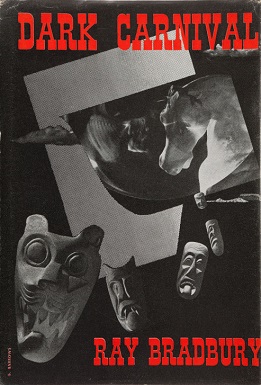
Dark Carnival is a short story collection by American writer Ray Bradbury, first published October 1947 by Arkham House. It was his debut book, and many of the stories were reprinted elsewhere.
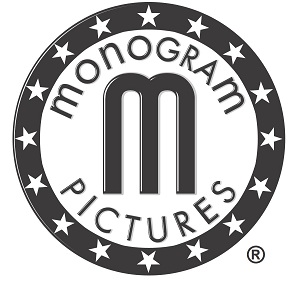
Monogram Pictures Corporation was an American film studio that produced mostly low-budget films between 1931 and 1953, when the firm completed a transition to the name Allied Artists Pictures Corporation. Monogram was among the smaller studios in the golden age of Hollywood, generally referred to collectively as Poverty Row. Lacking the financial resources to deliver the lavish sets, production values, and star power of the larger studios, Monogram sought to attract its audiences with the promise of action and adventure.
World Security Workshop was an anthology series on the ABC radio network, presented by United World Federalists, and its predecessor Americans United for World Government. Twenty-six half-hour episodes were broadcast between 14 November 1946 and 8 May 1947. ABC Radio Vice President Robert Saudek produced the series.
CBS Television Workshop is an American anthology series that aired on CBS from January 13, 1952, to April 13, 1952. The series is noted for featuring early television appearances of several well known actors, including Audrey Hepburn, James Dean, Sidney Poitier and Grace Kelly. The title was also used for a 1960 series.
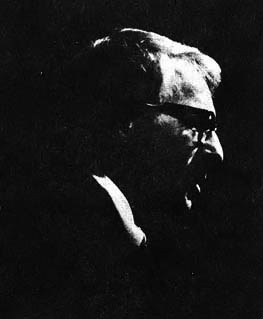
The following is a list of works by Ray Bradbury.
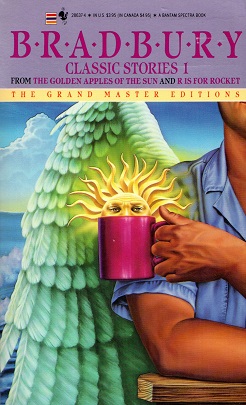
Classic Stories 1: From The Golden Apples of the Sun and R is for Rocket is a semi-omnibus edition of two short story collections by Ray Bradbury: The Golden Apples of the Sun (1953) and R is for Rocket (1962).
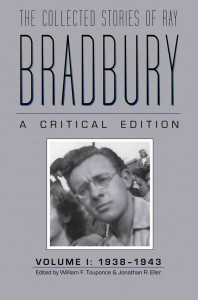
The Collected Stories of Ray Bradbury is a projected eight-volume scholarly publication by Kent State University Press aiming to collect every short story published by Ray Bradbury, presented in chronological order with textual apparatuses, edited by professors William F. Touponce and Jonathan R. Eller. The publication is approved by the Modern Language Association. The first volume, The Collected Stories of Ray Bradbury: A Critical Edition – Volume 1, 1938–1943 (ISBN 978-1606350713), was published on February 21, 2011. The second volume, The Collected Stories of Ray Bradbury: A Critical Edition – Volume 2, 1943–1944 (ISBN 978-1606351956), was published in September, 2014. The third volume, The Collected Stories of Ray Bradbury: A Critical Edition - Volume 3, 1944-1945 (ISBN 978-1-60635-071-3), was published in May, 2017.

Audie Murphy was a highly decorated American soldier and Medal of Honor recipient who turned actor. He portrayed himself in the film To Hell and Back, the account of his World War II experiences. During the 1950s and 1960s he was cast primarily in westerns. While often the hero, he proved his ability to portray a cold-blooded hired gun in No Name on the Bullet. A notable exception to the westerns was The Quiet American in which he co-starred with Michael Redgrave. Murphy made over 40 feature films and often worked with directors more than once. Jesse Hibbs who directed To Hell and Back worked with the star on six films, only half of which were westerns. When promoting his 1949 book To Hell and Back he appeared on the radio version of This Is Your Life. To promote the 1955 film of the same name, he appeared on Ed Sullivan's Toast of the Town. He was a celebrity guest on television shows such as What's My Line? and appeared in a handful of television dramas. Murphy's only television series Whispering Smith had a brief run in 1961. For his cooperation in appearing in the United States Army's Broken Bridge episode of The Big Picture television series he was awarded the Outstanding Civilian Service Medal.
References
- ↑ William F. Nolan; Martin Harry Greenberg (15 December 1992). The Bradbury Chronicles: Stories in Honor of Ray Bradbury . Penguin Group (USA) Incorporated. ISBN 978-0-451-45195-8.
- ↑ Philip A. Greasley (30 May 2001). Dictionary of Midwestern Literature, Volume 1: The Authors. Indiana University Press. pp. 79–. ISBN 0-253-10841-1.
- ↑ Jonathan R. Eller (10 August 2011). Becoming Ray Bradbury. University of Illinois Press. pp. 168–. ISBN 978-0-252-09335-7.
- ↑ Ray Bradbury (2004). Conversations with Ray Bradbury. Univ. Press of Mississippi. pp. 28–. ISBN 978-1-57806-641-4.
- ↑ Catalog of Copyright Entries. Third Series: 1976: January-June. Copyright Office, Library of Congress. 1977. pp. 3183–.